
If you went to your local Buick dealer in the 1980s to check out their mid-size cars (like the Regal), they gave you several performance-related choices. They included the T-Type, Turbo T, and the grandaddy of the bunch, the Grand National. The seller has a T-Type for sale from its first year in production, 1983. It’s been sitting for quite some time and is pretty rough, though we’re told the all-important turbocharger has recently been rebuilt. Located in Eagleville, Tennessee, this project performer is available here on eBay for $5,500 OBO.
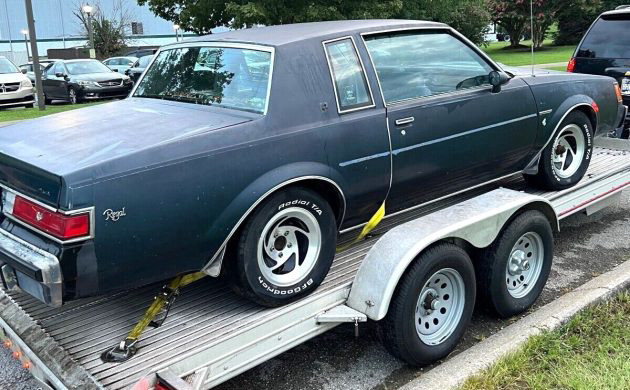
Between 1983 and 1987, you could check the “T-Type Package” box on the dealer’s order form in case you wanted some spunk in your new Buick. What that got you was a turbocharged 3.8-liter (231 cubic inch) V6 engine. But things didn’t stop there and you also got a tuned suspension set-up, unique wider wheels, and a variety of emblems so your friends would know what you bought. In ‘83, that added up to 190 hp in each of the 3,732 copies of the car that were produced.
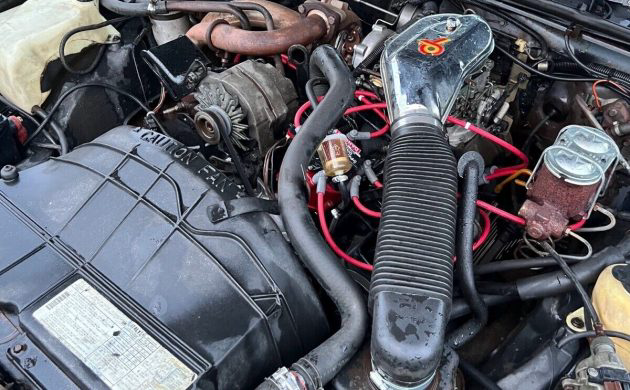
From the looks of things, the seller found this Regal in a barn, garage, or other dwelling where it had been sitting for several years. Though you can get the engine to run off an external gas can, the entire fuel delivery system will need to be refreshed. But we’re told the car will move around on its own, but you wouldn’t want to drive it off the property. The brakes are soft, too.
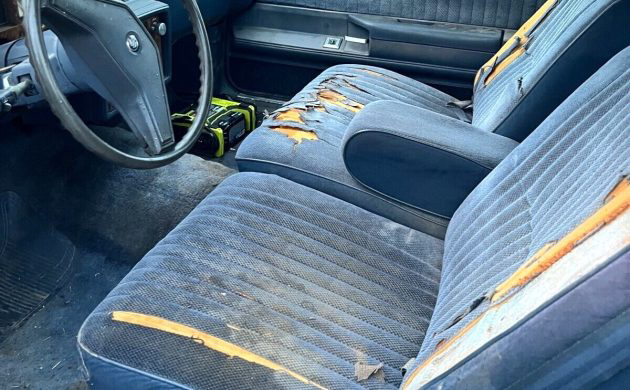
The Buick is not rust-free, with touches of it in the doors and the rear floor pans. We’re told this vehicle is original and comes with all its factory parts, including the turbo, which is why you would have purchased the car anyway. The interior is rough, too, as the upholstery is falling apart, at least on the front seats. This is likely going to be a challenging project, but you seldom see one of these T-Types anymore.




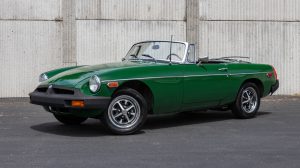
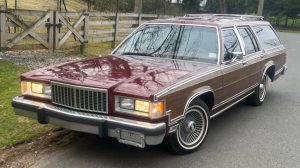





Warning lights all over the place. I don’t think there is anyone who worked in a GM service department back then that didn’t want to turn tail and run whenever one of these came in.
It took forever to get the carburetor dialed in. By then you had troubles with oil breaking down, with sludge scoring the bottom end and the oil pump which was incorporated into the aluminum timing cover. The greatly reduced oil pressure always caused the turbo to fail, some catastrophically. Of course in the case of a catastrophic turbo failure, you risked an instant replay if the entire air intake system wasn’t completely dismantled and the shards removed (When a turbo shuts down you get a reverse of pressure from the still-pressurized intake, which causes all the shrapnel to blow back into the carb, through the carb and into the intake. Of course you know what’s going to happen when a missed particle gets sucked into the new turbo.
Long story short, we hated them. The turbocharged Pontiac 301 that came out in the Firebirds wasn’t any better, except that it had a better oil pump.
Turbocharging a carburated gas pot was touchy at best, but adding ridiculous emission control regs made it a disaster. And, contrary to popular belief, the imports suffered similar problems. My niece bought one of those sporty little contraptions from the land of the rising sun and it was in the shop more than it was on the road. A turbo, a cylinder, head, another turbo, a short block then a complete engine. She traded it in for a new Omega and all was well. Too bad, a co-worker bought the used cherry-red lemon but got T-boned a month later and totalled it. Best thing that ever happened to it.
Bottom line: nothing was ever designed to fail. I think that back in the early 80s emission controls got so ridiculous that the manufacturers just couldn’t keep up with the resultant failures. Those poor engines were melting down inside. There were those who were careful and had few problems. But those typical idiots who jack-rabbit started, then started and stopped, and started and stopped again, just ran into trouble. One of the best things that could be done with any of them was to disable/remove the emission control stuff and re-tune the engine. You got the temperatures down under melt-down and then they went like Jack, the Bear…
I remember those days, & as cool as it sounded, word got around quickly for us drivers/customers stay away from anything “turbo”. Good friend bought a Monte Carlo turbo that era & regretted it. He ended up either ripping all the turbo stuff of or swapping out the whole engine. Been too many years to remember details.
I bought one of the first of these the Turbo Regal. Same engine and it was a great handling car but nobody back in 1978 knew about Turbo bearing coking. GM did a disservice by not recommending synthetic oil back then. BTW the 2 Buick dealers that looked at mine when the power dropped off at 30K miles had no idea of the fix. No warranty by that time (1982) so when I finally figured it out myself, they wanted over $1000 to rebuild the turbo. An ad in the back of Hot Rod magazine connected me with Turbo City and $125 later I had a rebuild kit. By using better oil and letting it cool down before shutting off I got another 70K miles before the next rebuild. Finally retired it after 130K miles and never had any oiling issues or other problems with my Turbo Regal. If Michigan rust hadn’t destroyed the body, I would still have it. By swapping out wheels, tires and a few poly urethane suspension parts it would out handle Vettes and Camaro’s built in the same era. BTW any boost over about 6# would make it knock like a SOB when it shifted into drive. I did all my own repairs so I never had to deal with dealers that didn’t want to fix it LOL.
Thank you, Geomechs, for your thoughtful insight. It’s all too easy to get all excited and into GN tribute mindset. Like you say it may be good for a responsible owner to restore and enjoy. You sure aren’t going to see many like it.
GM was trying all kinds of different things in those days. Ive been watching Derrick on VGG getting an 81 Coupe Deville with A V864 running again. They were trying to get cars running cleaner for the government mandates yet at the same time have some sort of performance as well. Trial by error in some of these cases like with the carburated turbo Buicks and Pontiacs in that era. But hey, at least they tried.
You remind me of another disaster; the 8-6-4. That often didn’t make it through the PDI roadtest. Fortunately GM realized that it shot itself in the foot and had a bandaid ready to go. Just set it up for 8 and let it go. No harm, no foul. Now all 8 cyl builders are using the ‘Elimination’ technology and it’s working.
Now, flip over to the diesel side and look at an 8-4 setup. International had a DV-550 V8. Binder engineers thought that they could save the owners lots of fuel if it cut four cylinders out under light loads. They set up the injection pumps with four pumping elements with a wider vertical slot in the plungers that eliminated the chance of those selected elements pumping fuel under light loads. It also incorporated restrictors in the intake for those cylinders. Well, start maneuvering a tractor unit under a trailer on soft ground and hit a small restriction. The governor would push the rack forward a little bit further ahead, which would engage the dormant elements causing those cylinders to fire, which would, in turn, cause the engine to surge and sometimes jump the hitch right over the 5th wheel or other aggravating things to happen. Any of those that came to our shop went out with (8) equally active cylinders, the restrictor plates removed, and the problem was solved.
All in the name of fuel economy and emission controls. But I have to say that the engineers perservered and things are now running better–sort of…
Better to hold out for the much more desirable, though expensive SFI 86-87 Turbo models. The earlier carbureted models live off the their reputation. Turbo Buicks like this one might make sense if it has always been well cared for and maintained, but not a neglected project.
Steve R
I noticed the ever important Ryobi battery tire inflator so figure on tires as well. I don’t understand why sellers just come out & say what they got because anyone interested in this lump will know what to look for because no kid will think how cool.
I had a 85 Hot Air – T
Was a smidge better than the carb’d ones .
Mickey Mouse hat on the Astro roof every time it went in the garage at my buddies place to work on it .
Non stop problems to keep it running right .
Dealer hated it back in the mid 90’s .
It was only 10 yrs old and all the techs ran from working on it when we couldn’t figure out how to dial it in 100%.
I would do my best diagnostic work and do what I could but at the end of the day just was a complicated time consuming vehicle that spent more time parked than on the road .
These are special but got to know what’s up .
These and the turbo Montes where terrible.
Took my engine out and replaced it with a 430 with stage 1 cam in it. Took care of all the problems.
I had a 77-78 I’m not sure now but it had a V8 I’m thinking 350, but that might not be right, it was a long time ago. I loved the car with the plush crushed velvet red interior. The only problem I had was a woman made a right turn in front of me on an icy road, my Buick was totaled.
God Bless America
I had a 1978 Buick Regal with the turbocharged 231 v6. Beautiful car , loaded with everything except T-Tops. The turbo malfunctioned and caused the engine failure. I could not afford a new turbo and engine so I installed a used carburetor 231 engine and ended up with a reliable car. Hopefully turbochargers have evolved and are more reliable these days
A 1978 turbo?????? never heard of it in a Buick that old—–explain plz
Do some research. I bought a 1978 Buick Turbo Regal new and had it for 15 years. Great car but had turbo failures. Very first year that evolved into the T-Type/Grand national cars by 1984.
I ordered one new and took delivery in January of 1978. Turbo Regal with 2 tone gold, power everything, bucket seats and 3.23 posi. Other than rebuilding the turbo myself at 34K miles and again at about 95K I never had any mechanical problems. Drove it to over 130K miles till the body rusted off. If I remember correctly, I paid about $9000 for it.
ADMIN–THIS IS NOT THE SAME COMMENT !!!! USELESS “BOT” YOU ARE USING ALSO!!!!!!!!???///////A 1978 turbo?????? never heard of it in a Buick that old—–explain plz